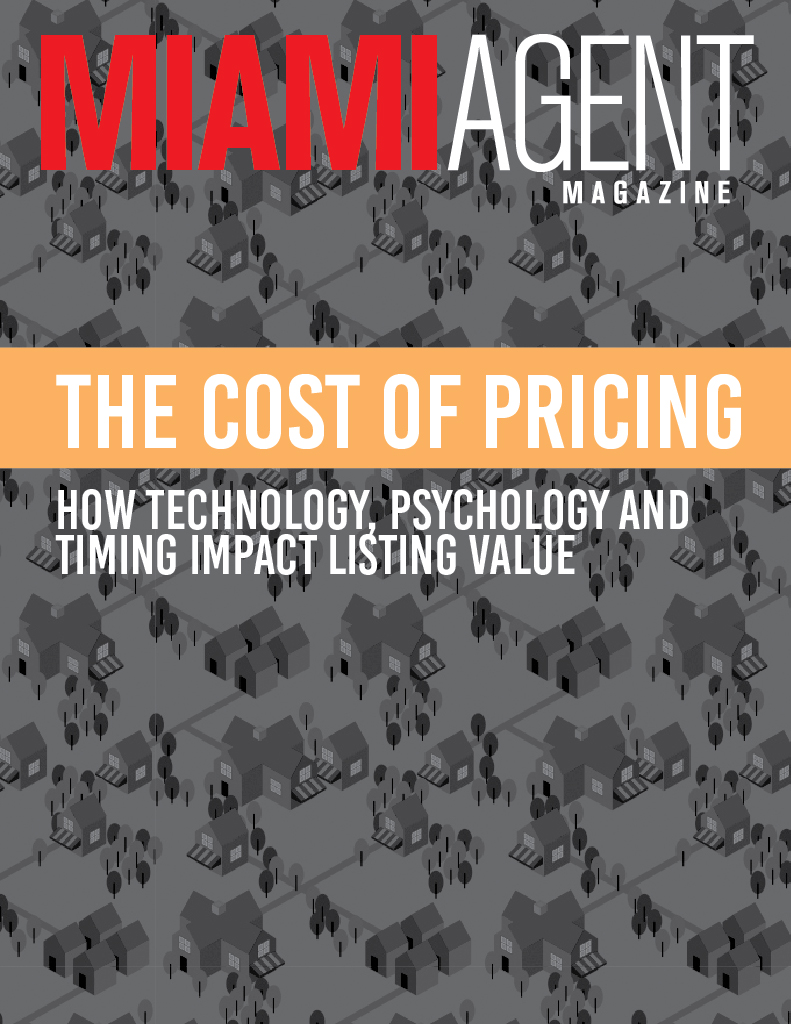 In early 2007, the recession stunned Miami real estate, bringing the swollen market to its knees. Prices plummeted, inventory fell and foreclosure inventory quickly turned from manageable into insurmountable. Within only a matter of months one of the nation’s hottest markets became one of its most volatile. In its wake, the city hobbled into recovery, but after eight years, the market is starting to find sure footing, only the ground is different. Miami is a changed market, and professionals need to form new strategies to succeed, particularly with regards to pricing.
In early 2007, the recession stunned Miami real estate, bringing the swollen market to its knees. Prices plummeted, inventory fell and foreclosure inventory quickly turned from manageable into insurmountable. Within only a matter of months one of the nation’s hottest markets became one of its most volatile. In its wake, the city hobbled into recovery, but after eight years, the market is starting to find sure footing, only the ground is different. Miami is a changed market, and professionals need to form new strategies to succeed, particularly with regards to pricing.
In Nov. 2006, Miami’s median home price reached its bubbled peak at $478,688, according to Case-Shiller. By Nov. 2007, the city’s median price had plummeted to $378,099, marking a trend of steep declines that continued until Oct. 2011 when median price hit a basement at $208,211. In less than five years, the Magic City’s booming market had been flipped on its axis. But while the immediate results were devastating, plunging a number of real estate-related businesses into ruin and low prices attracting waves of investors, the downturn taught those who survived a valuable lesson in planning for the worst.
“We’re much more cautious now,” said Julianna Giordano, broker and owner of International Palms Realty. “We’re cautious of the dangers of the bubble that may eventually come.”
Since prices hit the floor in late 2011, Miami’s market has made a remarkable turnaround, despite the burden of foreclosure congestion. The pace of appreciation was slow throughout 2011 and 2012, but in 2013, as buyers and sellers, both domestic and international, found new confidence, the market began to surge. In April of this year, median home price had reached $269,000, and it’s expected to continue climbing. However, as Giordano has observed, because of how Miami’s real estate dynamics have changed, median price is no longer as indicative of the market’s status as it once was.
“You now have to take into consideration the nuances of different neighborhoods,” she said. “Our market in southeast Florida is different from any other; values can vary from $50,000 to $100,000 just in properties across the street from one another.”
She explained the wild variations as a matter of idiosyncrasies that agents now need to make common knowledge in order to price their listings appropriately.
“Anywhere in the county, there is a strong probability that one neighborhood would have been built as much as 20 to 40 years earlier than a neighborhood adjacent to it,” she said, adding that it’s still important to consider the “usual factors,” as well.
For some professionals, like Alexandria Monge, a Realtor with Sun Realty Investments who has more than a decade in the industry, the drastic changes Miami has seen from the downturn and subsequent recovery, which some have called a second bubble, have completely altered her business, from her strategies all the way to her clientele.
“Prices reflect market behavior, and because of the recovery, increased property values have translated into surging home prices,” Monge said, noting the shortage of affordable homes in the area. “This shift has lead us as agents to guide our sales and marketing strategies to those buyers with certain levels of income.”
However, Miami’s new market hasn’t proven a catalyst for change for all agents. Edgar Morales, a longtime sales associate with Fortune International Realty, said his strategy hasn’t changed all that much during the recovery. It’s the same as it’s always been: price appropriately to the market.
“I’m of the mind that comparable homes from the past six months will provide the most accurate price,” Morales said. “It’s the method I use regardless of how the market is doing.”
Though, Morales added, with the popularization of syndication and real estate sites that allow consumers to do their own research before reaching out to an agent, he, as well as most agents, have had to adjust their language and strategies to account for possible misinformation and unrealistic expectations.
